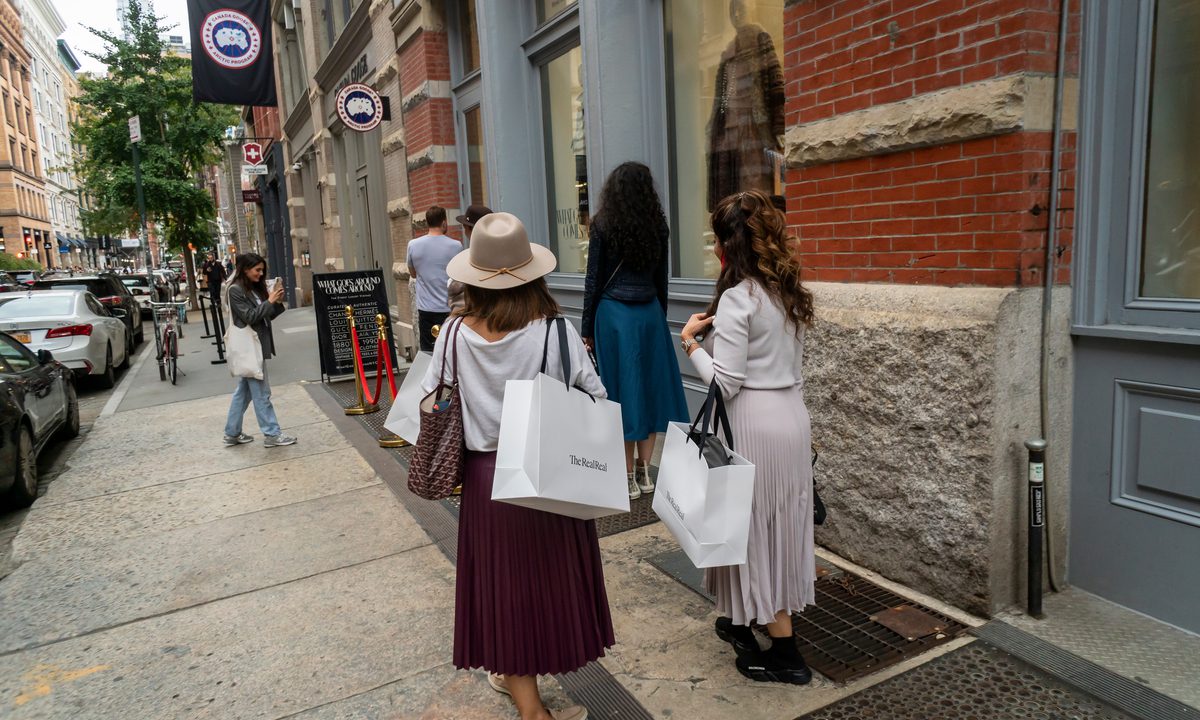The RealReal Says Luxury Is ‘Tremendously Resilient’, Inflation Driving ‘Strong Year’

Rising prices and tight supply for designer goods are pushing more buyers and sellers into the secondhand market, luxury resale platform The RealReal said Tuesday (May 10), adding that the 11-year-old firm was well-positioned to have a “strong year” as a result of rampant inflation.
As a result, the San Francisco-based platform operator said its first quarter gross merchandise value rose 31%, while its revenues jumped 48% for the three months ended March 31.
“The luxury business is tremendously resilient,” The RealReal Founder and CEO Julie Wainwright told analysts on the company’s earnings call. “We have a phenomenal flywheel where our buyers become sellers and our sellers become buyers and that gives us great confidence.”
While active buyers rose 21% to 828,000 and orders rose 27% to 878,000 versus a year ago, the company said its $487 average order value was up just 3%.
“We’re selling more apparel which naturally has a lower price point than fine jewelry or a handbag, but it also has a higher take rate for us,” Wainwright said, adding that apparel sales were normalizing in part due to increased back-to-work routines and a rise in events. “Those trends continued in April, so it’s more of a category shift than it is a trade down.”
Even so, The RealReal told analysts that its second-quarter revenues will be up more than 50%.
The Struggle
For all its progress and growth, the fact remains that The RealReal still posted a net loss of $57 million for the quarter, and its stock price has been getting hammered for over a year, falling 80% in 12 months and 60% year to date while shrinking its market value to just $410 million.
While The RealReal is one of many digital retailers currently facing heavy selling pressure on Wall Street, including resale peers such as ThredUp and Poshmark, Wainwright said her company is often misunderstood and wrongly categorized.
“We get lumped in with eCommerce quite a bit and we’re not an eCommerce business, we’re a marketplace business, and we’re also on the high end of the marketplace business,” Wainwright said while highlighting other ways the company was different than its peers and rivals.
“We certainly are aware of what’s going on in the normal eCommerce business and are certainly paying attention to everyone’s earnings reports, but they don’t map to our business really because of where we sit as a marketplace, and a value play in the luxury space with a unique product.”
A Metaverse Follower
In addition to the tailwind that inflation is providing in the form of increased demand for deals and value on pricey designer goods, Wainwright said a similar benefit would likely occur if the economy slipped into recession as many are now predicting.
Noting that The RealReal was launched at the tail end of a recession in 2011, Wainwright said it offered an opportunity for people to monetize their closets and get cash for unused items that might otherwise just be left to sit and collect dust.
To ensure that the company’s pricing is competitive and active, Wainwright said it will be making further investments into automated pricing tools, with a near-term target of 40% of handbags and jewelry and ultimately 80% of all items being valued automatically.
“We look to sell at the optimal price, not the highest price,” Wainwright said, of the company’s pricing strategy and algorithm.
Also on the emerging tech front, while acknowledging the fact that many brands had already moved to establish a toehold in the metaverse, Wainwright said the reputed 3-dimensional digital marketplace of the future was not for her or The RealReal’s 27 million members just yet.
“We don’t need to be a leader in the metaverse,” she said, “we will be a real deep follower on that one.”
Shares of The RealReal were up as much as 9% in extended-hours trading Tuesday afternoon.
See also: Resale Marketplaces See ‘Compelling Opportunity’ as Others Struggle With Supply Chain
